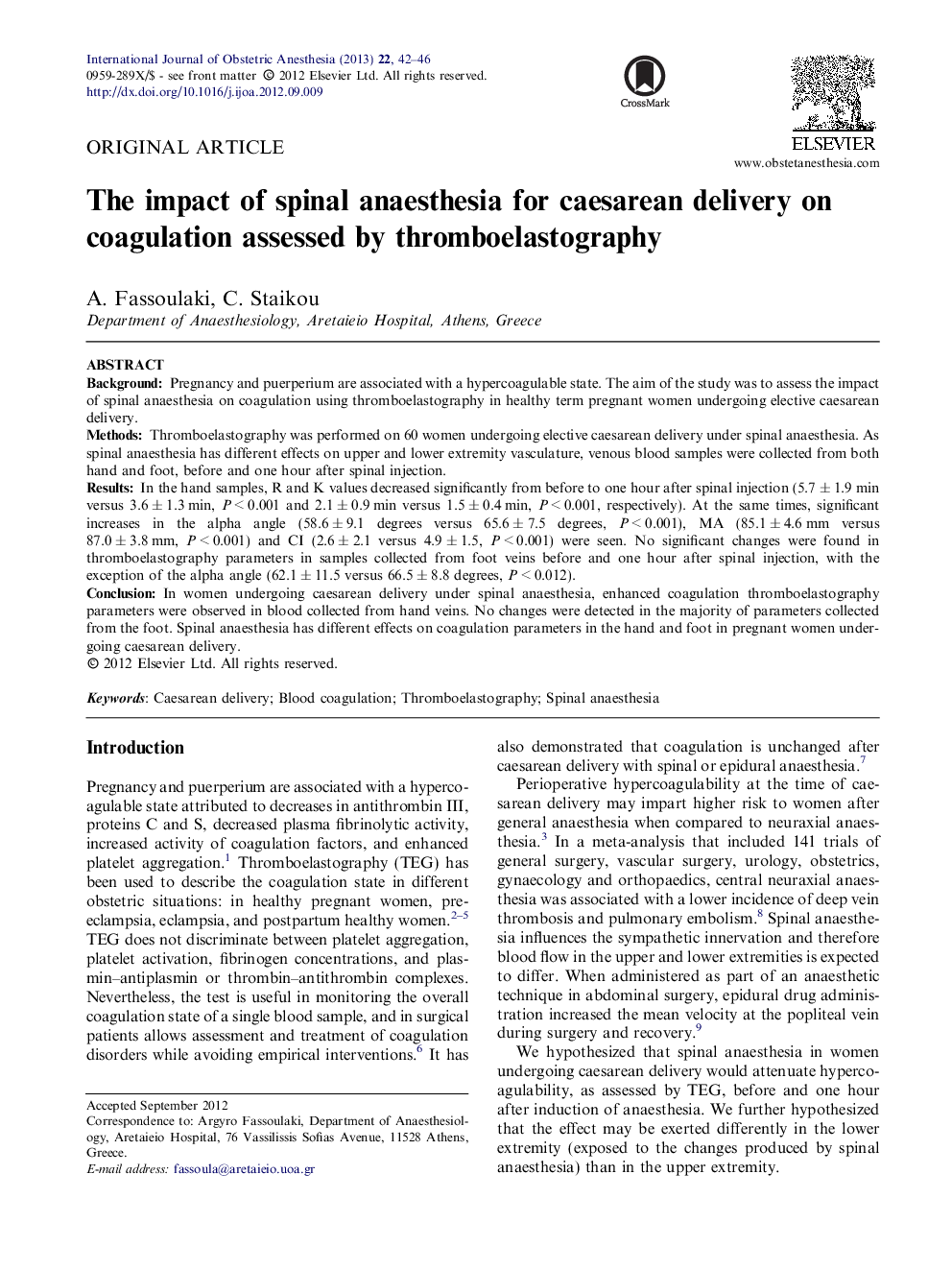| Article ID | Journal | Published Year | Pages | File Type |
|---|---|---|---|---|
| 2757865 | International Journal of Obstetric Anesthesia | 2013 | 5 Pages |
BackgroundPregnancy and puerperium are associated with a hypercoagulable state. The aim of the study was to assess the impact of spinal anaesthesia on coagulation using thromboelastography in healthy term pregnant women undergoing elective caesarean delivery.MethodsThromboelastography was performed on 60 women undergoing elective caesarean delivery under spinal anaesthesia. As spinal anaesthesia has different effects on upper and lower extremity vasculature, venous blood samples were collected from both hand and foot, before and one hour after spinal injection.ResultsIn the hand samples, R and K values decreased significantly from before to one hour after spinal injection (5.7 ± 1.9 min versus 3.6 ± 1.3 min, P < 0.001 and 2.1 ± 0.9 min versus 1.5 ± 0.4 min, P < 0.001, respectively). At the same times, significant increases in the alpha angle (58.6 ± 9.1 degrees versus 65.6 ± 7.5 degrees, P < 0.001), MA (85.1 ± 4.6 mm versus 87.0 ± 3.8 mm, P < 0.001) and CI (2.6 ± 2.1 versus 4.9 ± 1.5, P < 0.001) were seen. No significant changes were found in thromboelastography parameters in samples collected from foot veins before and one hour after spinal injection, with the exception of the alpha angle (62.1 ± 11.5 versus 66.5 ± 8.8 degrees, P < 0.012).ConclusionIn women undergoing caesarean delivery under spinal anaesthesia, enhanced coagulation thromboelastography parameters were observed in blood collected from hand veins. No changes were detected in the majority of parameters collected from the foot. Spinal anaesthesia has different effects on coagulation parameters in the hand and foot in pregnant women undergoing caesarean delivery.
